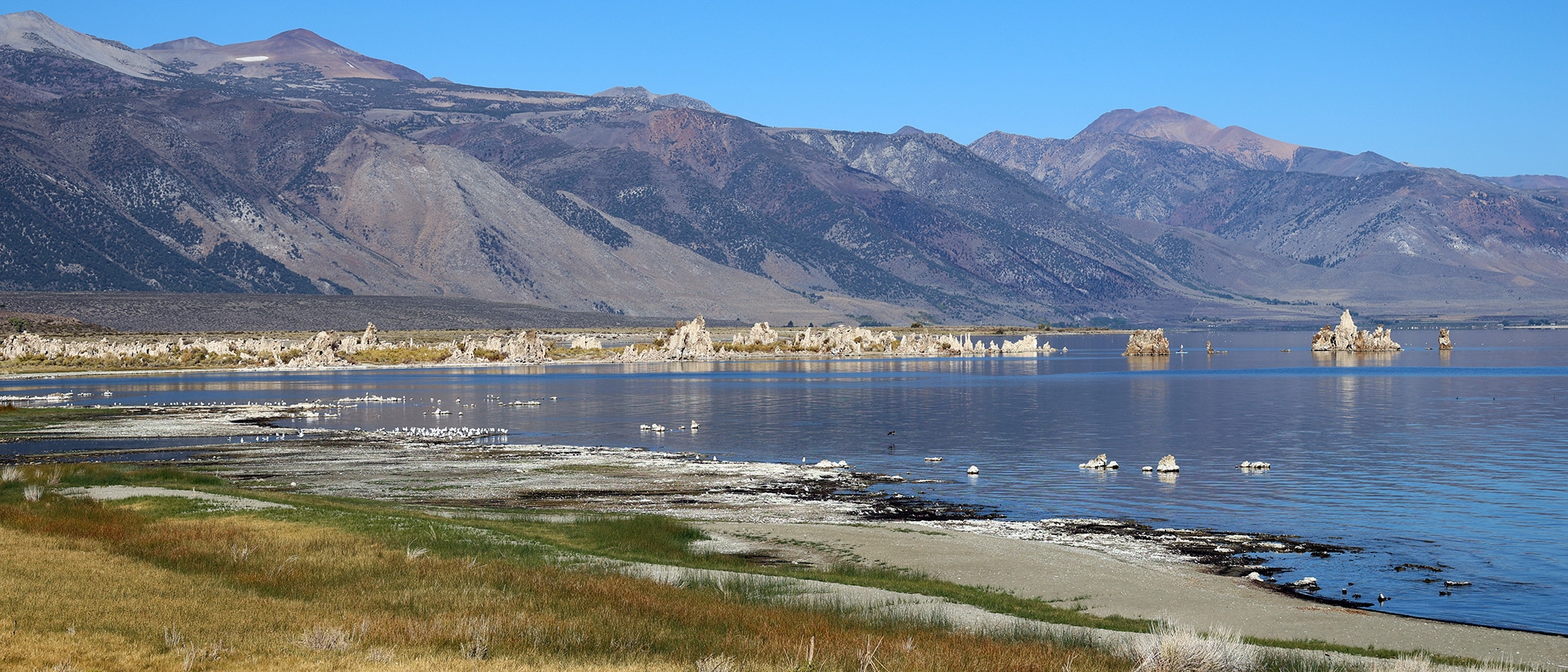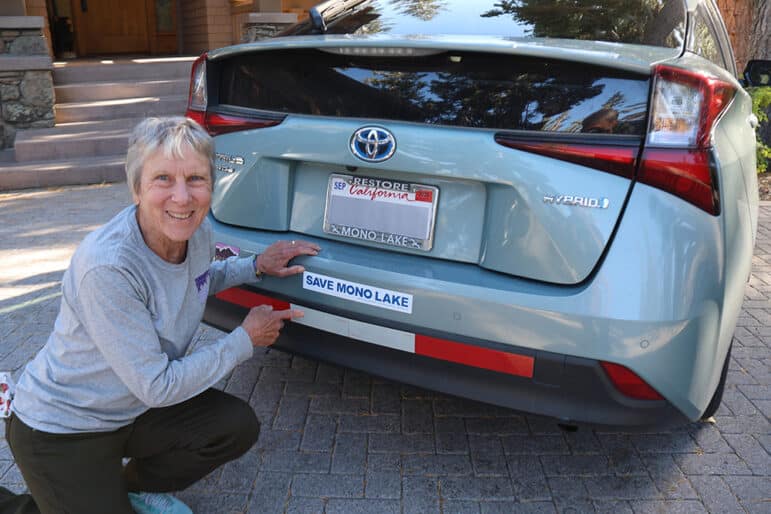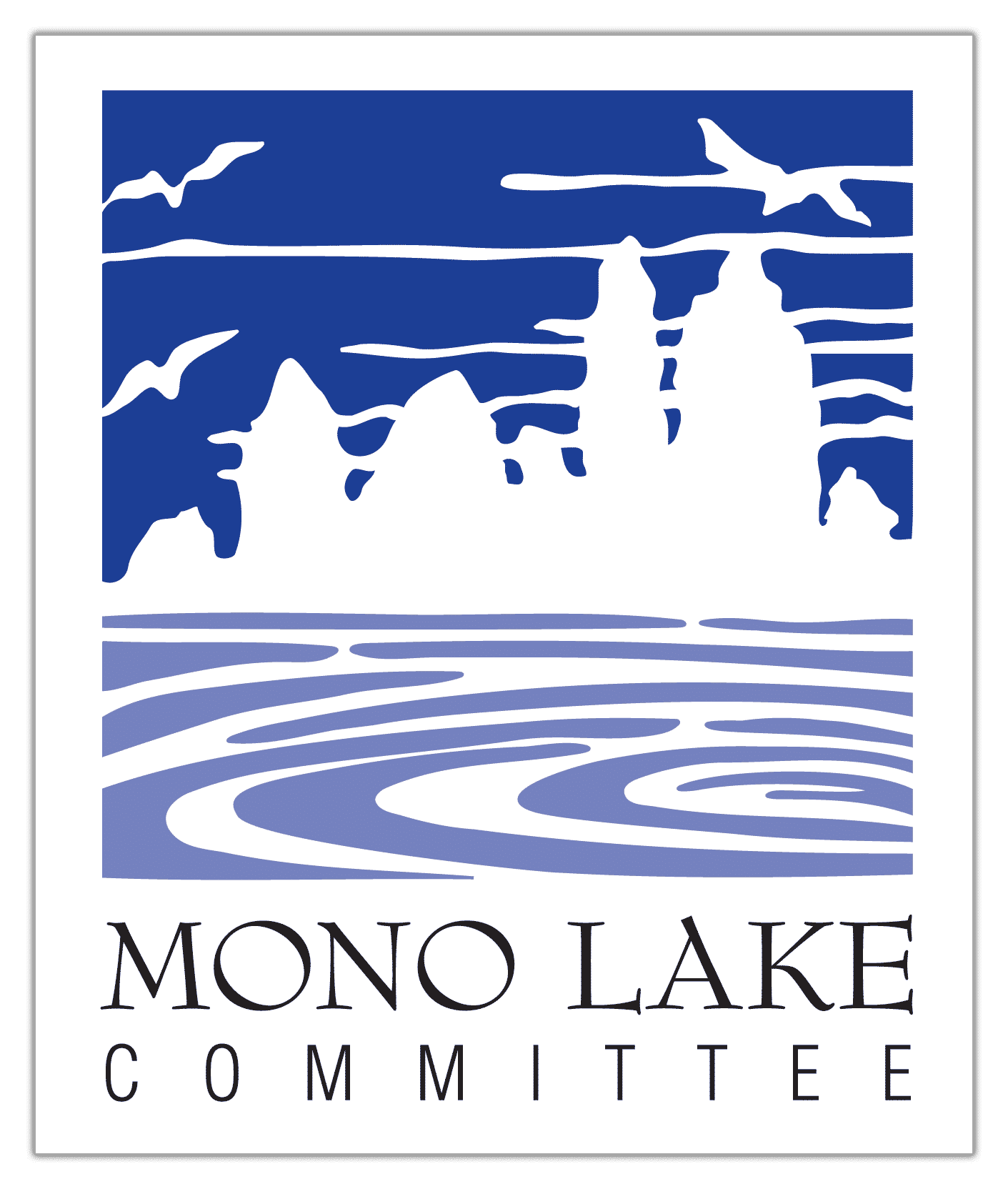
Meanwhile, the Los Angeles Department of Water & Power doubles down on lowering Mono Lake
News headlines shined spotlights on Mono Lake this summer. On the front page of the Los Angeles Times “‘It needs more water’: Calls grow for boosting Mono Lake” was followed several days later by “Mono Lake showing toll of LA’s thirst for water.” The multiple stories, reminiscent of the 1980s and 90s, were prominently featured in the LA Times, San Francisco Chronicle, New York Times, and more.
The articles sparked new conversations with folks in Los Angeles, concerned Mono Lake Committee members, and thousands of visitors at Mono Lake. “When is the State Water Board hearing happening?” is an increasingly common question.
When will the State Water Board step in?
To raise the level of Mono Lake the nine feet still needed to achieve the California State Water Resources Control Board’s healthy lake level mandate, the Board needs to hold a hearing to issue new rules for DWP’s water exports. But when that hearing will take place is still a guessing game.
There’s no question that State Water Board members and staff are well aware of the situation at Mono Lake, and that they plan to act on their own self-imposed requirement to hold a hearing. We have seen signs of progress, including leadership traveling to Mono Lake for agency meetings and the Board increasing staffing in preparation for the hearing. Additionally, the Board’s commissioning of Mono Lake-specific climate change and hydrology reports and tools from an expert modeling group at UCLA is promising.
On the other hand, the Board has not announced a schedule for holding the hearing. Summer came and went, despite being frequently mentioned as the time when the hearing notice would be issued.
The timeliness of Board action is critical. For all its beauty, Mono Lake is suffering at the current low level, a situation starkly illustrated by the California Gulls having their worst nesting season on record last year.
DWP doubles lake decline with diversions
Mono Lake would naturally fluctuate down a half foot in this drier-than-average year. This expected drop in lake level, when Mono Lake has not yet reached the healthy level mandated by the State Water Board, made no difference to DWP when it planned water diversions. DWP’s Annual Operations Plan laid out plans to maximize water export this year.
As a result, DWP is doubling the drop of Mono Lake this year, an impactful yet dubious accomplishment. Between maximized surface water diversions and the ongoing daily capture of Mono Basin groundwater, DWP’s water exports are removing the equivalent of half a foot of Mono Lake this year (see page 14).
Meanwhile, a DWP press release headline made lofty claims: “Highlighting Commitment to Sustainable Water Management and Stewardship of Eastern Sierra Resources.”
DWP could certainly change operations in response to robust local water supply successes in the city. But operators were told to crank open the gates and water began flowing away from Mono Lake to Los Angeles exactly as planned, on October 1.
As a result of DWP’s water exports, at the start of the next runoff year, April 1, 2026, Mono Lake will be half a foot lower than it needs to be, and half a foot further from the healthy lake level DWP agreed to work toward 31 years ago.
How low could Mono go?
Will the winter ahead be a wet one? Or dry? Predictions abound, and snowfall in the months ahead will provide the real answer. But if dry conditions like those we’ve experienced over the recent 15 years return, the lake will drop to disappointing levels that raise new alarms.
Over the next 18 months, if we have a rerun of dry winters like those seen in 2013–2015 and again in 2020–2022, models project Mono Lake will fall below 6,380 feet. That would expand the landbridge to the nesting islands, giving predators access to vulnerable nesting gulls, and requiring deployment of the gull protection fence. It would also be a sad loss of the lake level progress made after the wet winter of 2023.
This dry scenario assumes DWP continues to maximize diversions, accelerating the lake’s drop, because it always does. The outcome highlights the opportunity for the State Water Board to take a better approach, one which dynamically limits diversions to lock in lake level gains when they happen.
The State Water Board needs to hear from you
Now is the time to speak up for Mono Lake and write to the State Water Board to encourage them to schedule the Mono Lake hearing as soon as possible.
You can send a personalized email to the State Water Board using our online letter writing tool.
While you’re at it, get a “Save Mono Lake” bumper sticker to help spread the word.

First produced in 1979, these bumper stickers became an icon of the movement to stop DWP’s destructive water diversions. We had retired them after the State Water Board ordered Mono Lake to rise back in 1994, but with the lake only halfway to the mandated healthy level after 31 years, it’s time to bring them back.
With DWP ignoring the healthy 6,392-foot lake level requirement and continuing to maximize water diversions each year, it’s time to rally again under the “Save Mono Lake” banner. Show your support—on your car, laptop, or water bottle—and help urge the State Water Board to act now.

This post was also published as an article in the Fall 2025 Mono Lake Newsletter. Top photo by Andrew Youssef.
